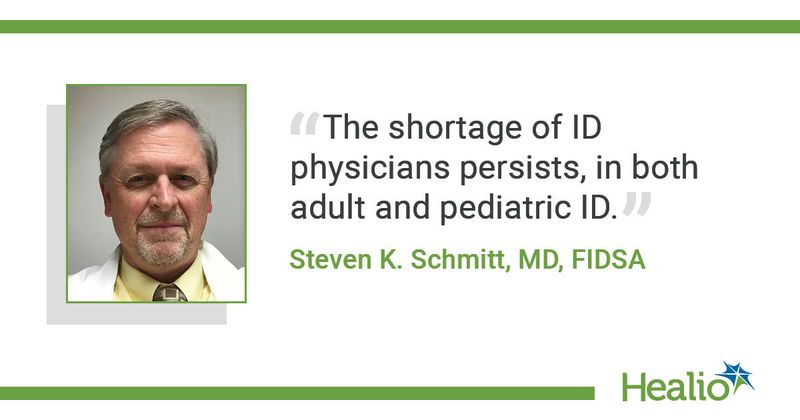Nearly half of ID fellowship programs go unfilled as shortage persists
Key takeaways:
- Just 56% of ID fellowship programs and 74% of ID fellowship positions were filled on Match Day.
- The number of ID applicants also declined, although the number of certified programs increased again.
Nearly half of infectious diseases fellowship programs were not filled on Match Day as the number of applicants declined despite an increase in certified ID programs, the Infectious Diseases Society of America announced.
“The shortage of ID physicians persists, in both adult and pediatric ID,” IDSA president Steven K. Schmitt, MD, FIDSA, vice chair of the department of infectious diseases at the Cleveland Clinic, said in a statement. “IDSA and the ID specialists it represents believe that the ID workforce needs to grow for the nation’s long-term security.”

According to the IDSA, just 56% of 178 ID fellowship programs and 74% of 441 ID fellowship positions were filled Wednesday, compared with 70% of programs and 82% of positions in 2022. Additionally, the number of applicants decreased to 330 from 364 last year, the IDSA reported.
The number of certified programs represents an increase of 48 programs over what existed a decade ago, and six more than existed in 2022. The number of positions offered has increased by 125 in the last decade and by five since last year.
ID has struggled to recruit physicians for years. Despite what experts have characterized as the specialty’s outsized impact on patient and public health, low compensation remains a roadblock to recruitment, Schmitt said.
He also mentioned large student loan burdens, the politicization of medicine and challenges from combatting the COVID-19 pandemic.
“These are complex issues that require solutions forged by the field, policymakers and health system leaders,” Schmitt said. “IDSA continues to produce tools that demonstrate ID’s value to hospitals and health systems — both economically and in terms of better health outcomes for patients.”
References:
- IDSA. ID fellowship match results. https://www.idsociety.org/professional-development/student--resident-opportunities/id-match/match-resources/. Published Nov. 29, 2023. Accessed Nov. 29, 2023.
- IDSA. IDSA statement on 2023 ID fellowship Match. https://www.idsociety.org/news--publications-new/articles/2023/idsa-statement-on-2023-id-fellowship-match/. Published Nov. 29, 2023. Accessed Nov. 29, 2023.
